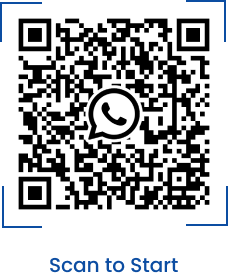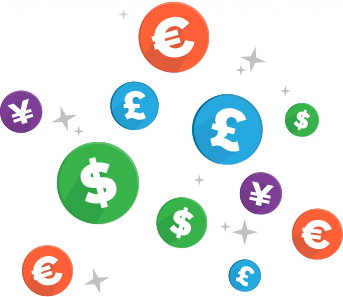Qatari Riyal is now the official currency of the State of Riyal, after replacing the Gulf Rupee. Qatari Riyal has been pegged against the US dollar since 1975 and it has maintained a peg of QR 3.64 per USD since 1980. The Qatari Government and the Central Bank of Qatar authorized this ?peg? officially in 2001. The Qatar currency is divided into 100 dirhams and is abbreviated as either QR (English) or ?.? (Arabic). Outside Qatar, this currency can be exchanged in countries of the Middle East.
Some facts that you ought to know about the QATAR currency:
1. The short name for Qatar money is QR.
2. Qatari coins used the most are 1 DIRHAM, 5 DIRHAMS, 10 DIRHAMS, 25 DIRHAMS, 50 DIRHAMS.
3. The most frequently used banknotes are 1 RIYAL, 5 RIYALS, 10 RIYALS, 50 RIYALS, 100 RIYALS, 500 RIYALS
4. Qatar Central Bank is the chief bank of Qatar and reserves the right to issue the currency of Qatar.
History of Qatari Riyal
The coast of the Arabian Peninsula is the home of one of the wealthiest countries in the world, Qatar. With a high exchange rate, the currency of Qatar enjoys a valuable position in the world economy as well. The currency of the Qatari Riyal, also known as the Rial is written as QAR or QR Under the Royal Decree of Qatar, the Qatari Riyal has been pegged to the US Dollar since 2001 at a fixed rate of 3.64 Riyal per US Dollar. Since Qatar is a leading oil-producing country in the world, the oil and natural gas exports of the country account for more than half of the total GDP of the country. The Qatar Central Bank is responsible for maintaining the monetary sector of the country.
Before Riyal became the monetary system of Qatar, the Gulf Rupee along with the Indian Rupee were in circulation in Dubai and Qatar and were linked to the Pound Sterling. However, India subverted its currency by approx 35% and this led to Dubai and Qatar dropping off Indian Rupee and switching to Saudi Riyal until a proper monetary system of their own was introduced. On 21st March 1966, Qatar-Dubai Currency Board. Soon, the board announced a new currency for Dubai and Qatar which was known as Qatar-Dubai-Riyal (QDR) in September 1966. At the gold par value of 0.186621, the value of the currency was set. When Dubai joined the United Arab Emirates, UAE, in 1971, the Qatar-Dubai Currency Board was relinquished under the Amiri Decree in 1973. Later on, QMA, Qatar Monetary Agency, was established and it continued administering the monetary flow of the country. At the same gold value, a new currency, Qatari Riyal was introduced in Qatar.
In 1975 , Riyal was pegged to SDR (Special Drawing Rights) and also adopted US Dollar as an intervention currency in the later years. It revalued QR against Dollar several times. Finally, under the Royal Decree of 2001, Qatari Riyal was officially pegged to US dollars at a fixed rate of 3.64 QR per Dollar. The exchange rate band of QR/Dollar is 3.6385 to 3.6415. Qatar Central Bank issues both currency banknotes and coins. The denominations of banknotes are 1, 5, 10, 50, 100, and 500 Riyals and the coins come in denominations of 1, 5, 10, 25, and 50 Dirhams. One Riyal consists of 100 Dirhams. With all the monetary policies introduced by the country so far, the value of QR has remained high in the global market.
Factors Affecting the Exchange Rate of Qatari Riyal
The exchange rate of the Qatari Riyal obviously fluctuates to some extent since it is pegged to the US Dollar only and not to any other currency. Hence for countries other than the US, the rate of exchange for QR will be different and is mostly high. This is primarily because of the good economic profit made by the country in the global markets. The basis of the Qatari economic profit is its oil and natural gas production which is exported to various countries across the globe.
1. Oil and natural gas:
Around 85% of the total GDP of Qatar is accumulated from the export of oil and natural gas. The country is one of the hubs of natural gas and oil and since these are quite expensive and high in demand in the global market, the country makes huge profits. However, Qatar is working towards shifting to other means of international trade and diversifying its export and GDP contributors. Various countries are shifting to alternatives to oil which can impact the export and the relatable profit for oil-producing countries.
2. Others
QR is pegged to the US Dollar and so, the exchange rate of the US Dollar impacts the exchange rate of the Riyal. Apart from this, the commodity prices in the international market, interest and inflation rate of Qatar also affect the performance of the Qatari Riyal in the global market.
The fixed exchange rate, as followed by Qatar, offers several advantages for the country. It avoids the inflation rate to a great extent and brings more economic stability to the country. It creates a better condition for more foreign investments.
read less












